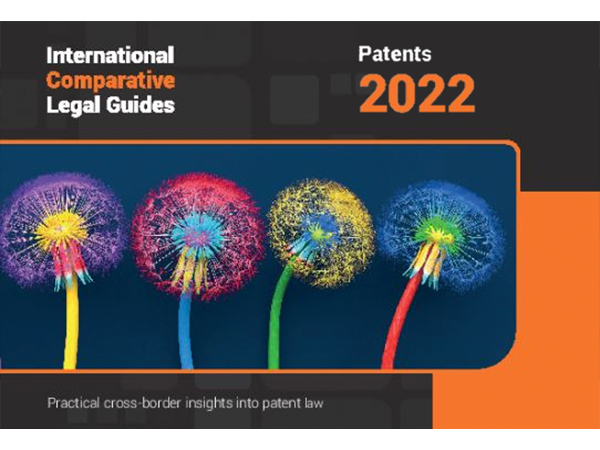
Intellectual Property
Viewpoints
Filter by:
Time-Barred IPR Petitioners Have Separate Standing to Appeal PTAB Decisions
February 12, 2019 | Blog | By John Bauer
In the February 1, 2019 decision of Mylan Pharms. Inc. v. Research Corp. Techs., 2019 U.S. App. LEXIS 3282, __ F.3d __, 2019 WL 405682, the Federal Circuit affirmed a PTAB final written decision (FWD) holding claims of U.S. Reissue Patent 38,551 not unpatentable. The Federal Circuit also held that time-barred petitioners who participated in an IPR as a result of joinder have standing to appeal. In finding such standing, the Federal Circuit analyzed the interplay between 35 U.S.C. §§ 315(b), 315(c), and 319.
Read more
Federal Circuit Dismisses Appeal of IPR Final Written Decision for Lack of Standing After Appellant Terminated Development of Potentially Infringing Pharmaceutical Product
February 11, 2019 | Blog | By Adam Samansky, Peter Cuomo, Joe Rutkowski
On February 7, 2019, the United States Court of Appeals for the Federal Circuit, in Momenta Pharmaceuticals v. Bristol-Myers Squibb, No. 2017-1694, dismissed Momenta’s appeal of a Final Written Decision in an Inter Partes Review (“IPR”) because Momenta had terminated its potentially infringing drug development program. According to the panel, this left Momenta without a sufficiently concrete interest in the action to satisfy the standing requirements of Article III of the United States Constitution.
Read more
PTAB Finds that Allowing IPR Petitioner to Avoid a Statutory Bar by Retroactively Adding Missing Real Party in Interest Is “In the Interest of Justice”
February 8, 2019 | Blog | By William Meunier, Daniel Weinger, Courtney Herndon
Recently, in ZTE (USA) Inc. v. Fundamental Innovation Int’l LLC, IPR2018-00425, Paper No. 34 (Feb. 6, 2019), the Patent Trial and Appeal Board (“PTAB”) allowed Petitioner’s motion to retroactively correct its defective IPR petition to identify a previously undisclosed real party in interest and thereby avoid a mandatory statutory bar.
Read more
Patent Term Adjustment: The Real Meaning of Applicant Delay
February 6, 2019 | Blog | By Christina Sperry, Elissa Kingsland
On January 23, 2019, the Federal Circuit decided Supernus Pharmaceuticals, Inc. vs. Iancu and shed light on Patent Term Adjustment (PTA). PTA was established by the American Inventors Protection Act of 1999 and codified at 35 U.S.C. § 154(b), which defines three kinds of United States Patent and Trademark Office (USPTO) delays, “A” delay, “B” delay, and “C” delay, and sets forth certain reductions from the summation of the Type A, B, and C delays. One of these reductions relates to Applicant delays. For an overview of PTA, see our prior articles here and here.
Read more
Year in Review: The Most Popular Blog Posts of 2018
January 30, 2019 | Blog | By Christina Sperry
As 2019 begins and intellectual property (IP) strategies are being developed for the new year, it is a good time to reflect on what IP issues were prominent in 2018. According to many readers, hot topics included handling IDSs and obviousness during U.S. patent prosecution, blockchain, PTAB rules, and subject matter eligibility under Section 101.
Read more
Supreme Court Holds AIA Did Not Alter the Settled Meaning of “On Sale”
January 22, 2019 | Blog | By Brad M Scheller, Peter Snell
Today the United States Supreme Court unanimously affirmed the Federal Circuit and held that it remains the law under the America Invents Act (AIA) that a confidential sale to a third party can trigger the “on sale” bar to patentability.
Read more
Significant 2018 Trademark Decisions
January 9, 2019 | Blog | By Michael Graif
This year the Supreme Court, United States Court of Appeals for the Federal Circuit, and the Circuit Courts penned a number of opinions impacting trademark law. Here are some key takeaways from the past year:
Read more
Written Description in Amgen v. Sanofi: Is the Federal Circuit Possessed? Will SCOTUS Grant Certiorari?
January 2, 2019 | Blog | By John Bauer
In the continuing Amgen v. Sanofi saga, Amgen has asked SCOTUS to take up the issue of written description, which is currently established by showing “whether the disclosure…reasonably conveys…that the inventor had possession of the claimed subject matter as of the filing date.” Ariad Pharms., Inc. v. Eli Lilly & Co., 598 F.3d 1336, 1351 (Fed. Cir. 2010)(en banc)(emphasis added).
Read more
Double Check Your Filings, A Cautionary Tale at the PTAB
January 2, 2019 | Blog | By John Bauer, Courtney Herndon
Recently in Nuna Baby Essentials, Inc. v. Britax Child Safety, Inc., IPR2018-01683, Paper No. 11 (PTAB Dec. 18, 2018), the Patent Trial and Appeal Board (“Board”) denied Petitioner’s motion to excuse the late filing of exhibits to the Petition, finding that Petitioner failed to establish good cause for such late filing or that consideration of the late-filed exhibits would be in the interests of justice.
Read more
Significant 2018 Patent Decisions and a Look Ahead
December 20, 2018 | Blog | By Peter Snell
This year the Supreme Court, United States Court of Appeals for the Federal Circuit, and the Federal District Courts penned a number of opinions impacting patent law. Here are some key takeaways from the past year.
Read more
Brewery Defeats Trademark Opposition by Conservative Public Figure Phyllis Schlafly
December 18, 2018 | Blog | By Michael Graif
Relatives of the late conservative political activist, Phyllis Schlafly, lost their appeal to prevent the Saint Louis Brewery, LLC (“the Brewery”) from trademarking the Schlafly name in connection with various beer products on November 26, 2018.
Read more
CAFC Affirms Prior Jury Verdict Admissible in Upholding $140M Verdict against Time Warner
December 17, 2018 | Blog
On November 30, 2018, the Federal Circuit affirmed a jury verdict awarding Sprint Communications Company, LP (“Sprint”) damages in the amount of $139,800,000.00 USD against Time Warner Cable, Inc., et al., for infringing five patents directed to Voice over IP technology (“VoIP”).
Read more
ITC to Review Controversial Apple-Qualcomm Decision
December 13, 2018 | Blog | By Michael Renaud, James Wodarski, Marguerite McConihe
As anticipated https://www.mintz.com/insights-center/viewpoints/2231/2018-10-alj-pender-apple-infringes-no-exclusion-order-qualcomm, on December 12, 2018, the International Trade Commission (“ITC”) issued a notice to review the Final Initial Determination and Recommended Determination (“FID”) issued by Administrative Law Judge (“ALJ”) Pender in In the Matter of Certain Mobile Electronic Devices and Radio Frequency and Process Components Thereof, 337-TA-1065 (“Certain Mobile Electronic Devices”), where ALJ Pender, despite finding that a valid patent was infringed and all jurisdictional requirements met, recommended that no Limited Exclusion Order be issued against Apple because it would be contrary to the public interest.
Read more
Judge Applies WesternGeco Principles to Direct Infringement Under 35 U.S.C.§ 271(a)
November 30, 2018 | Blog | By Adam Samansky, Alexander Roan
A federal district court judge recently applied the recent U.S. Supreme Court decision in WesternGeco LLC v. ION Geophysical Corporation, in which the Supreme Court held that lost profits damages could be awarded for infringement occurring under 35 U.S.C.§ 271(f), to cover damages for direct infringement occurring under 35 U.S.C.§ 271(a) (see our prior post here for an overview of the case and the issues before the Court, and here for an overview of the Court’s June opinion).
Read more
Understanding Priority Claims for U.S. Patent Applications: Part 2
November 27, 2018 | Blog | By Christina Sperry, Elissa Kingsland
This article is second in a two-part series focusing on various issues related to priority claims in U.S. patent applications. While Part 1 is a general overview of how to make a proper priority claim, this article addresses how to make a timely post-filing priority claim in an application and how to correct an improper priority claim. Timeliness is crucial to avoid high fees and ensure that an earlier priority date is not lost. The procedures discussed below are post-America Invents Act (AIA) procedures applicable to applications and issued patents filed on or after March 16, 2013.
Read more
Prosecution Strategies for Avoiding Patent Eligibility Rejections for Diagnostics
November 19, 2018 | Blog | By Ken Jenkins
Under the Mayo/Alice test for patent eligibility, answering the questions of whether any particular claim is “directed to” a “judicial exception” without “significantly more” remains in many ways a substantial and unpredictable challenge for U.S. patent applicants in the diagnostic space. In cases where the detection processes are typically deemed “routine and conventional” (e.g., PCR) and the targets are known (e.g., expression of a known gene), claims must be crafted in ways that avoid rejections for both patent eligibility and anticipation and/or obviousness over the prior art. The recent PTAB decision in In re Srivastava et al. expressly addresses obviousness in this context, while highlighting a possible strategy for dealing with patent eligibility challenges as well (Appeal 2017-1981, Application 13/974,007, decided October 22, 2018; hereafter “In re Srivastava”).
Read more
European Patent Office Issues New Guidelines on Artificial Intelligence and Machine Learning
November 7, 2018 | Blog | By Michael Renaud, Marguerite McConihe
On November 1, 2018, the European Patent Office (“EPO”) issued new guidelines for the patentability of artificial intelligence (“AI”) and machine learning (“ML”) inventions which indicate that applications within this subject matter may be treated as largely unpatentable. The new guidelines, G-II 3.3.1, provide that AI and ML are “based on computational models and algorithms for classification, clustering, regression and dimensionality reduction, such as neural networks, genetic algorithms, support vector machines, k-means, kernel regression and discriminant analysis.” These “computational models and algorithms” are, according to the guidelines, “per se of an abstract mathematical nature.”
Read more
§102(b) Printed Publication: Unrestricted Distribution at a Trade Show
November 5, 2018 | Blog | By Andrew DeVoogd, Serge Subach
The U.S. Court of Appeals for the Federal Circuit opinion issued on November 1, 2018 clarifies the standard for a document to qualify as a “printed publication” under pre-AIA 35 U.S.C. §102(b) and reversed an earlier Patent Trial and Appeal Board (“PTAB”) decision.1 Specifically, the requirement that a reference be “publicly available” is not as narrow as the PTAB had interpreted. The Court held that “the standard for public accessibility [of an alleged prior art reference] is one of reasonable diligence, to locate the information by interested members of the relevant public.”
Read more
“A New Day” for Amending Claims in Post-Grant Proceedings
October 29, 2018 | Blog | By William Meunier, Daniel Weinger, Matthew Galica
U.S. Patent and Trademark Office Director, Andrei Iancu, recently gave a speech to the American Intellectual Property Law Association where he discussed a new rule proposal aimed at improving the patent amendment process during post-grant proceedings. Specifically, he informed the audience—and patent practitioners, generally—that the USPTO “will formally publish a notice seeking comments on a new claim amendment process for post grant proceedings.” The stated purpose of the proposed rule change is to “ensure balance” in post-grant proceedings by making the amendment process “feasible and meaningful” for the owners of challenged patents.
Read more
Federal Circuit Denies RPX’s Request for en banc Review in Applications in Internet Time v. RPX
October 26, 2018 | Blog | By Peter Snell, Daniel Weinger
Continuing our coverage of the Federal Circuit’s Applications in Internet Time, LLC v. RPX Corp. (“Internet Time”) decision, on Tuesday, October 23, 2018, the Federal Circuit denied RPX’s request to rehear the case en banc. Internet Time held that the Patent Trial and Appeal Board (“PTAB”) must use a flexible approach when determining what entities constitute real parties in interest for the purpose of inter partes review (“IPR”). See Applications in Internet Time, LLC v. RPX Corp., 897 F.3d 1336 (July 9, 2018) (“Internet Time”). Petitioners for IPR challenging a patent must identify all real parties in interest in their petition. 35 U.S.C. § 312(a)(2). The Director is not authorized to institute trial on the petition if the petitioner, real party in interest, or privy of the petitioner, was served with an infringement complaint for the patent in question more than one year before the petition’s filing. See 35 U.S.C. § 315(b).
Read more
Explore Other Viewpoints:
- Antitrust
- Appellate
- Arbitration, Mediation & Alternate Dispute Resolution
- Artificial Intelligence
- Awards
- Bankruptcy & Restructuring
- California Land Use
- Class Action
- Complex Commercial Litigation
- Construction
- Consumer Product Safety
- Cross-Border Asset Recovery
- Debt Financing
- Direct Investing (M&A)
- Diversity
- EB-5 Financing
- Education & Nonprofits
- Employment
- Energy & Sustainability
- Environmental Enforcement Defense
- Environmental Law
- FDA Regulatory
- Federal Circuit Appeals
- Financial Institution Litigation
- Government Law
- Growth Equity
- Health Care
- Health Care Compliance, Fraud and Abuse, & Regulatory Counseling
- Health Care Enforcement & Investigations
- Health Care Transactions
- Health Information Privacy & Security
- IP Due Diligence
- IPRs & Other Post Grant Proceedings
- Immigration
- Insolvency & Creditor Rights Litigation
- Institutional Investor Class Action Recovery
- Insurance & Financial Services
- Insurance Consulting & Risk Management
- Insurance and Reinsurance Problem-Solving & Dispute Resolution
- Intellectual Property
- Investment Funds
- Israel
- Licensing & Technology Transactions
- Life Sciences
- Litigation & Investigations
- M&A Litigation
- ML Strategies
- Medicare, Medicaid and Commercial Coverage & Reimbursement
- Mergers & Acquisitions
- Patent Litigation
- Patent Prosecution & Strategic Counseling
- Pharmacy Benefits and PBM Contracting
- Portfolio Companies
- Privacy & Cybersecurity
- Private Client
- Private Equity
- Pro Bono
- Products Liability & Complex Tort
- Projects & Infrastructure
- Public Finance
- Real Estate Litigation
- Real Estate Transactions
- Real Estate, Construction & Infrastructure
- Retail & Consumer Products
- Securities & Capital Markets
- Securities Litigation
- Special Purpose Acquisition Company (SPACs)
- Sports & Entertainment
- Strategic IP Monetization & Licensing
- Tax
- Technology
- Technology, Communications & Media
- Technology, Communications & Media Litigation
- Trade Secrets
- Trademark & Copyright
- Trademark Litigation
- Venture Capital & Emerging Companies
- White Collar Defense & Government Investigations
- Women's Health and Technology







